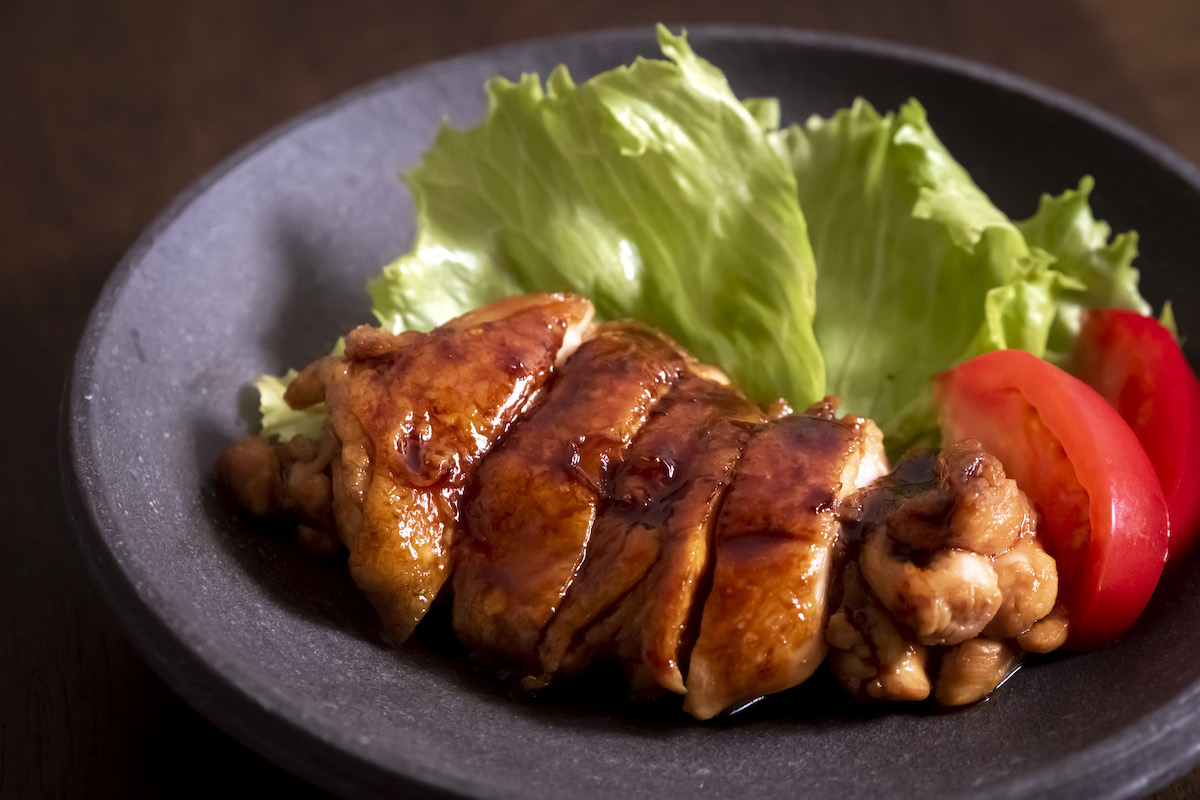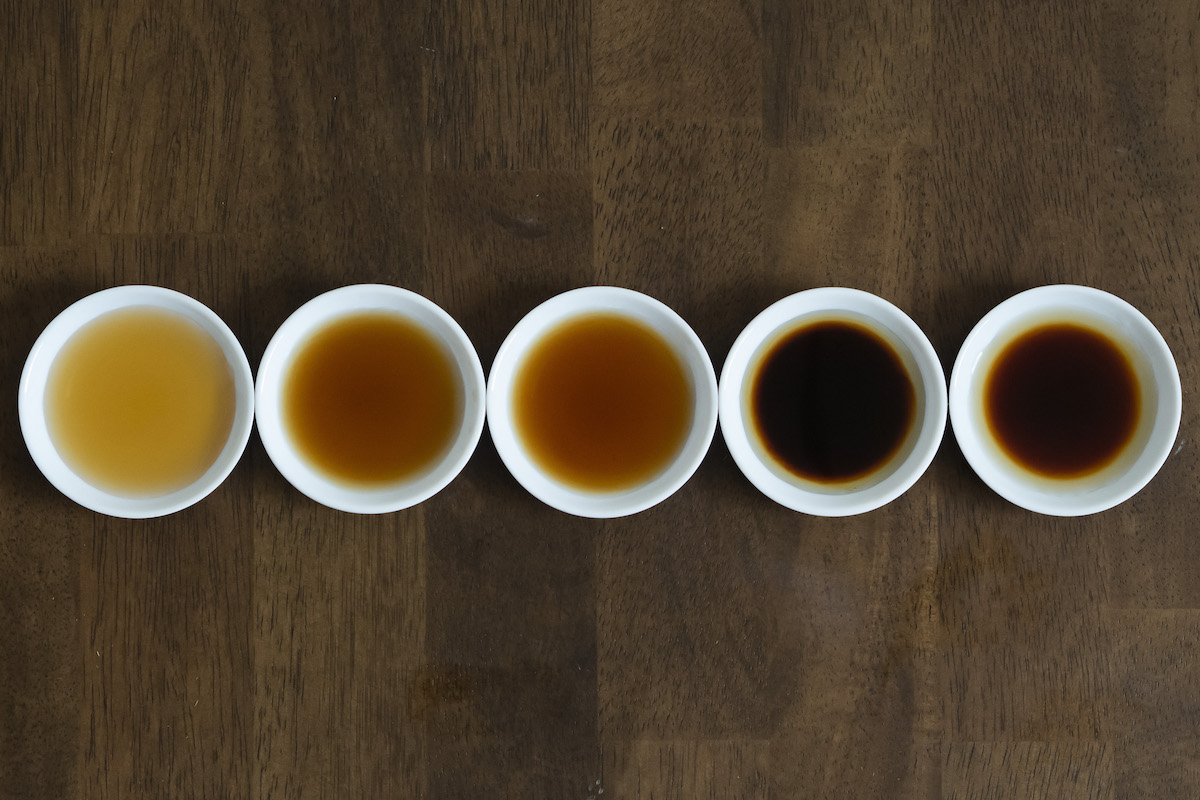Chicken Teriyaki
Last October, American food professionals visited fermented food producers to deepen their knowledge of Japanese fermentation culture during the “Hakko Tourism in Japan” tour campaign. As part of the tour, organizers held a tasting session where guests gave candid advice from the perspective of the American market to food product manufacturers looking to enter the United States market.
Teriyaki is a globally well known Japanese dish. However, teriyaki is recognized differently within Japan and outside of Japan. Outside of Japan, the focus tends to be placed on the sauce, with recognition of “food with teriyaki sauce on it”, whereas in Japan it means the cooking method of glazing while grilling.
The word teriyaki became established in the US in 1961 when Japanese soy sauce maker Kikkoman tried to promote Americans to use soy sauce on a daily basis and used Japanese teriyaki cooking style to develop a sauce that can be enjoyed by everyone. It was named “Teriyaki” and sold in the US. Then, what is the original Japanese teriyaki?
When grilling food such as chicken or Japanese amberjack with sauce mixed with soy sauce and mirin, as the sauce gets poured over the food multiple times, the various sugars found in mirin create a coat over the surface of the food and adds a beautiful gloss. And as the sauce boils, a Maillard reaction occurs with the amino acids from the soy sauce and mirin mixing with the sugars, creating an aroma that whets the appetite. This is Japanese teriyaki.
So which kind of soy sauce allows you to enjoy the most delicious Japanese teriyaki? Shiro, usukuchi, koikuchi, sai-shikomi, or tamari? We tasted and compared these five kinds of soy sauce.

Serving: 1
Ingredients
- 1 chicken thigh
- 1 ½ tablespoons soy sauce
- 3 tablespoons mirin
- 1 tablespoon sake
Directions
- If possible, bring the chicken back to room temperature, make a cut into the thick part of the chicken and open it, trying to make the thickness as even as possible. Remove any excess fat, then prick the chicken with a fork to allow the taste to soak in easier.
- Heat frying pan, put the chicken with the skin side facing down and cook on medium heat until the skin turns brown. If the color doesn’t change after two minutes or so, turn the heat up to high.
- Turn the chicken over and cook for 1-2 minutes, then remove from pan and wipe off any fat that has come out with paper towel. This will allow the sauce to mix and stick well to the chicken.
- Put all of the seasonings into the frying pan and mix well while cooking on medium heat, making sure it doesn’t burn. Continue until the sauce is reduced down to half.
- Put the chicken back in and use a spoon to continuously pour the sauce over the chicken. When the sauce has covered the entire chicken and a glaze has formed over it, turn the heat off.
- Take the chicken out of the frying pan and cut into easy-to-eat pieces. Put the cut pieces of chicken on a plate and pour the remaining sauce in the pan over the chicken.
Taste Comparison

Shiro soy sauce (lightest in color with a touch of sweetness)
Since darker, stronger soy sauce are said to go well with teriyaki, it is surprising that shiro soy sauce actually goes very well with teriyaki. The sweetness of the mirin, shiro soy sauce, and meat all blend together exquisitely in harmony, bringing out a rich sweetness and a comforting soft taste. Sure to be popular with children.
Usukuchi soy sauce (subdued color and aroma with a salty taste)
Koikuchi soy sauce (king of soy sauce, good balance of the five flavors)
While koikuchi soy sauce is a safe bet in terms of taste, it masks the goodness of the seasoning and chicken, leaving a feeling that something is missing.
Sai-shikomi sauce (twice the brewing period and quantity of ingredients of koikuchi soy sauce)
The meaty and rich taste make you think “This is what teriyaki is all about!”. The unity of the sweetness and umami of the seasoning and the taste of the delicious meaty juice from the chicken make for a very satisfying dish.
Tamari soy sauce (soybeans as the main ingredient, characterized by its deep flavor)
With its strong and full flavor, just a small bite will fill you with a sense of energy and an urge for some white rice. Perfect for those who want to enjoy plenty of food.
Overall, the sai-shikomi soy sauce suits the dish the best. It has the richest taste and adds a shiny deep red glaze to the finish which whets the appetite. For those who want to take a big, generous bite of teriyaki and enjoy a strong taste, tamari soy sauce is the best choice. Shiro soy sauce is recommended for those who prefer a soft, rich sweetness.

For More Recipes
Keiko Kuroshima, the world's first soy sauce sommelier and certified sensory inspector, hails from Japan's soy sauce production hub in Shodoshima. She co-authored a book on the island's breweries and is the only female among the three soy sauce sommeliers worldwide. Her expertise and passion elevate soy sauce appreciation globally.

